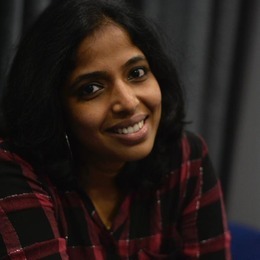Madras, now known as Chennai, is a city that thrives on its unique culture, diverse population and a blend of traditions that have evolved over centuries. Among the myriad of dialects from across Tamil Nadu, one stands out—the distinct "Madras Tamil" or "Madras Baashai," a colloquial dialect born out of the bustling streets of the capital city. This linguistic cocktail, reflecting the city’s history and its people, resonates through Chennai’s streets, capturing the essence of its vibrant culture and everyday life. Let’s now explore the unique nuances of this remarkable dialect that defines Chennai.
Madras Baashai emerged as a pidgin language during the British colonial period when the city was a melting pot of various communities, including Tamils, Telugus, Malayalis, Marwaris and English-speaking colonizers. It’s a language that doesn’t belong to any one community; instead, it’s a shared linguistic heritage of Chennai’s diverse population. In a city that is home to people from various states and countries, Madras Baashai serves as a unifying force, bridging gaps between different languages and cultures. The rickshaw drivers and jutka (horse cart) drivers of old Madras, particularly along Walltax Road near the Central Railway Station, played a crucial role in shaping the Madras Tamil dialect. As they regularly interacted with travellers who spoke a variety of languages, they quickly adopted commonly used words from these languages into their everyday Tamil, leading to the evolution of the distinct Madras Tamil we recognize today. The dialect was initially spoken by the working class, street vendors, and immigrants who settled in Madras as the city became a bustling hub for British employment opportunities. These groups needed a practical and flexible means of communication. Over time, the dialect became woven into the everyday conversations of the city’s residents, evolving into a symbol of Chennai’s vibrant street culture. Nivedita Louis, Chennai-based culture researcher notes that this dialect, born from the working class, is characterized by its straightforwardness, often with a sharp cut in the last or penultimate syllable—a distinctive feature. The working class, constantly on the move and pressed for time, needed a quick and efficient way to communicate, which led to the development of this dialect. This psychological aspect, rooted in the demands of their daily lives, is often overlooked when discussing the origins of Madras Tamil.
Chennaiites who have lived in the city for more than three generations fluently speak Madras Tamil at home and it is not the slum dialect often portrayed in movies. This negative portrayal has led to a perception that Madras Tamil is inferior, causing those who speak it to be unfairly judged as lacking manners. However, perceptions are changing as people gain a deeper understanding of the city and its people. Despite this, it remains common to hear criticism of the Madras dialect from those in other parts of Tamil Nadu, who often boast that their own regional dialect is the superior form of Tamil.
The Madras dialect is a simplified version of spoken Tamil, enriched with words from Urdu, Kannada, Telugu, Hindi, Burmese and English, reflecting the city’s historical journey and cultural diversity. It embodies the identity of the hardworking, everyday people who form the backbone of Chennai. These individuals, often overlooked, play a crucial role in shaping and building the city, with their language reflecting a deep connection to Chennai’s spirit.
The Madras Baashai dialect is not only distinct but also serves as a vivid expression of the city's character. It is informal, humorous and often laced with sarcasm, capturing the essence of Chennai's culture. Known for its simplicity and adaptability, this language effortlessly fits into various contexts, reflecting the city's resilience and resourcefulness. Apart from the well-known terms like "Appeettu” (from English), "Attu” (from Burmese), "Bejaaru” (from Urdu), "Dhuddu” (from Kannada), "Galeeju” (from Urdu) - it is the simplicity in sentence formation and word pronunciation that truly defines the uniqueness of the Madras dialect. Many people might think that just using these famous words characterizes the entire dialect, but it is the overall ease and straightforwardness of the language that sets it apart.
Take, for instance, the term “Saavu Graakki”— a phrase used to describe someone seen as a troublemaker. This term has its roots in the everyday lives of jutka drivers who worked near Central Station and the General Hospital. On good days, they would pick up travellers, but on less fortunate days, they would have to earn their living by transporting bodies from the hospital's mortuary. The word “graaki” comes from the Hindi term “graahak,” meaning customer, and those who ended up only transporting the dead were dubbed “Saavu Graakki.” Every term in Madras Baashai speaks volumes about the city’s history, making this dialect an integral part of Chennai's cultural identity.
Madras Tamil made its way into Tamil cinema, particularly in the films of the 60s and 70s, where it was often used to portray characters from Chennai’s working class. While this portrayal sometimes led to a narrow view of the dialect, in reality, Madras Tamil is spoken across the city by people of all classes, especially those whose families have lived in Chennai for several generations. The dialect has naturally become part of their everyday language. Although Tamil films have frequently exaggerated this dialect to amplify its humor and distinctiveness for entertainment, this representation has also played a significant role in popularizing the unique language of Chennai.
When discussing this unique dialect, we cannot overlook the musical forms deeply intertwined with Madras Baashai—namely, Gujili songs and Gaana. These forms are essential to the cultural fabric of Chennai, with the dialect itself serving as a crucial element. Gaana, often considered the folklore of Madras, is a lively and expressive genre that captures the everyday experiences and emotions of the city's working class.
Gaana, which originated in the narrow lanes of Tondiarpet in north Chennai, reflects the vocal essence of subaltern identity. Its simple melodies and heartfelt lyrics, delivered in a hybrid language, have transitioned from the dusty streets of Tondiarpet, Vyasarpadi, Puliyanthope, Doomingkuppam and Korukkupettai to Tamil cinema. Many Gaana songs delve into themes of life and death, known as "marana gaana," performed during cremations, and others address poverty and hardship. While traditional themes include friendship, love, and struggle, contemporary Gaana singers are now exploring social and environmental issues in their music. Tamil cinema plays a crucial role in bringing gaana to the limelight and many gaana singers are well known today because of their contribution in Tamil cinema. V. Ramakrishnan, an Assistant Professor of Tamil Literature, who has authored the book Gaana Paadalgal: Chennai Adithala Makkal Varalaru, says the genre is entwined with the lives of youngsters in these slums.
On the other hand, Gujili songs, which first emerged in the 19th century, gained popularity during the nationalist movement. The term "Gujili" originally mocked Gujarati women, but over time, it came to be used more broadly to poke fun at any young woman. While Gujili songs initially began as mockery, they soon evolved to cover a wide range of themes, reflecting the essence of life in Madras. These songs, often penned by individuals with no formal education, were published in small booklets and sold in the evening bazaar near Central Railway Station, in the Moore Market area. According to Nivedita Louis, the market earned the name Gujili Bazaar in the 1920s due to the presence of Gujarati traders, a name that still exists today.
Both Gujili songs and Gaana are vibrant expressions of Madras culture, with the dialect playing an integral role in their enduring appeal. These songs weren’t just catchy because of their tunes and language; the themes resonated deeply with the people, as they revolved around events, customs, celebrations and everything in between.
The Madras dialect played a crucial role in making these songs accessible and easy to learn, allowing them to quickly spread among the masses. Both Gujili songs and Gaana are vibrant expressions of the city's culture, with Madras Baashai serving as the backbone of their lasting charm. While Gaana has become synonymous with the folklore of Madras, Gujili songs have etched the city's history into their verses, making them an inseparable part of Chennai's cultural heritage.
Madras Baashai is more than just a quirky street language—it’s the heartbeat of Chennai. It captures the essence of the city, with its blend of tradition and modernity, its humour and its resilience. Whether you are a native of Chennai or a visitor, understanding and using Madras Baashai is like getting a glimpse into the soul of the city. It is a reminder that language is not just a means of communication but also a powerful expression of culture, identity and community.
In the ever-changing landscape of Chennai, Madras Baashai remains a constant—a linguistic thread that connects the past with the present and the people with their city.

















